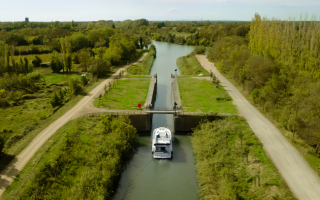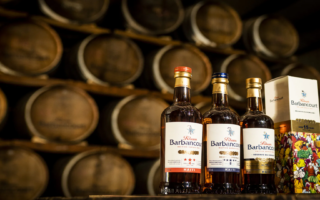Garlic Galore: Summer Garlic Festivals in France
The humble allium has become an emblem of French cuisine and inspires festivals across the south-west, says Vanessa Couchman
What would French cuisine be without garlic? This pungent bulb has become one of the symbols of France. Garlic is a natural flavouring, contains no fat and is good for your health, especially the heart. It is so highly prized that the people of south-west France organise annual festivals to celebrate it.
Garlic first appeared in south-west France in the Middle Ages, brought by nomadic merchants. A legend relates that one trader had no money to pay for his dinner at Lautrec in the Tarn département, so he settled up with pink garlic cloves instead. The innkeeper planted the cloves and Lautrec is now the centre of pink garlic cultivation. There are said to be more than 600 cultivated sub-varieties of garlic, and in south-west France the two principal types are pink and white. Pink garlic has a rigid flower stem while that of white garlic is flexible, which affects the way in which the bulbs are plaited together. Before selling the garlic, the growers peel off the external skin. In Lautrec, they remove all but the final layer so that the pink colour shows through. The bulbs are then sold separately or tied together into a manouille in Lautrec or a tresse in Beaumont-de-Lomagne.
L’Ail Rose de Lautrec is particularly valued because it keeps for months in the right conditions. White garlic is produced around the bastide town of Beaumont-de-Lomagne in the Tarn-et-Garonne département. Both communes are in the Midi-Pyrénées region, which produces 63 per cent of France’s annual production.
The enthusiasm with which local people celebrate their garlic is a sign of its importance in the local economy. Beaumont-de-Lomagne stages the Fête de l’Ail Blanc every July – after the harvesting and drying of the garlic – attracting up to 15,000 people to its tastings, musical parades and storytelling sessions.
Organiser Céline Fresquet said: “Local growers sell about three tonnes of garlic and around 100 stands offer other local products. A Mass in the Occitan language takes place in the church, accompanied by a cross made of garlic, and is followed by a concert. The fête also features the world garlic-peeling contest: the record is 31.15 kilograms in 30 minutes.”
Another contest sees entrants vying to make the best tourin à l’ail, a traditional garlic broth. Visitors can taste the soup and Pan Tintat, bread rubbed with garlic cloves. Throughout the day, there are musical parades, storytelling sessions and art exhibitions. The massive market hall shelters revellers during the evening repas gourmand. This year’s 20th anniversary celebrations will have a flavour of the Pays Basque, with the region’s music, games and dishes.
The Fête de l’Ail Rose in Lautrec takes place in early August. A highlight is the contest between producers to make the longest manouille (a plait of garlic bulbs) in the space of three hours. In 2013, the record stood at 22.9 metres. Lautrec also runs contests for ‘Miss Pink Garlic’, sculptures made from pink garlic and the best pink garlic tart. A fabounade (giant cassoulet) enjoyed by around 1,000 people closes proceedings.
Garlic’s place in the kitchen is indisputable. I discovered a little-known treat, aillette, which is young garlic before the bulb has formed; not unlike a spring onion. Alain Sancey, president of the Ail de Lomagne en Fête association, showed me how to peel it so that only the white part was left. “Then you chop it, not too finely, fry it in oil and use it to flavour an omelette. It’s delicious.” He gave me a bag of aillettes and I can vouch for the recipe.
So important has garlic become that Jeanne Strang named her classic book about the cuisine of south-west France Goose Fat and Garlic. Of l’aligot (the ‘ali’ is a variation of ail) she writes; ‘This wonderful creamy potato and cheese purée is often served at village fêtes, marriages and other festivities as a course on its own.’
Visit: www.ailrosedelautrec.com (in Lautrec) and http://club.quomodo.com/fetedel-ail (Beaumont-de-Lomagne) for garlic producers who sell direct at the farm.
Garlic festivals: Beaumont-de-Lomagne, 20 July 2014; Lautrec, 1 August 2014.
Tourist offices: Beaumont-de-Lomagne tourist office (tel: (Fr) 5 63 02 42 32, www.tourisme-en-lomagne.com). Lautrec tourist office (tel: (Fr) 5 63 75 31 40, www.lautrec.fr/tourisme).
Share to: Facebook Twitter LinkedIn Email


